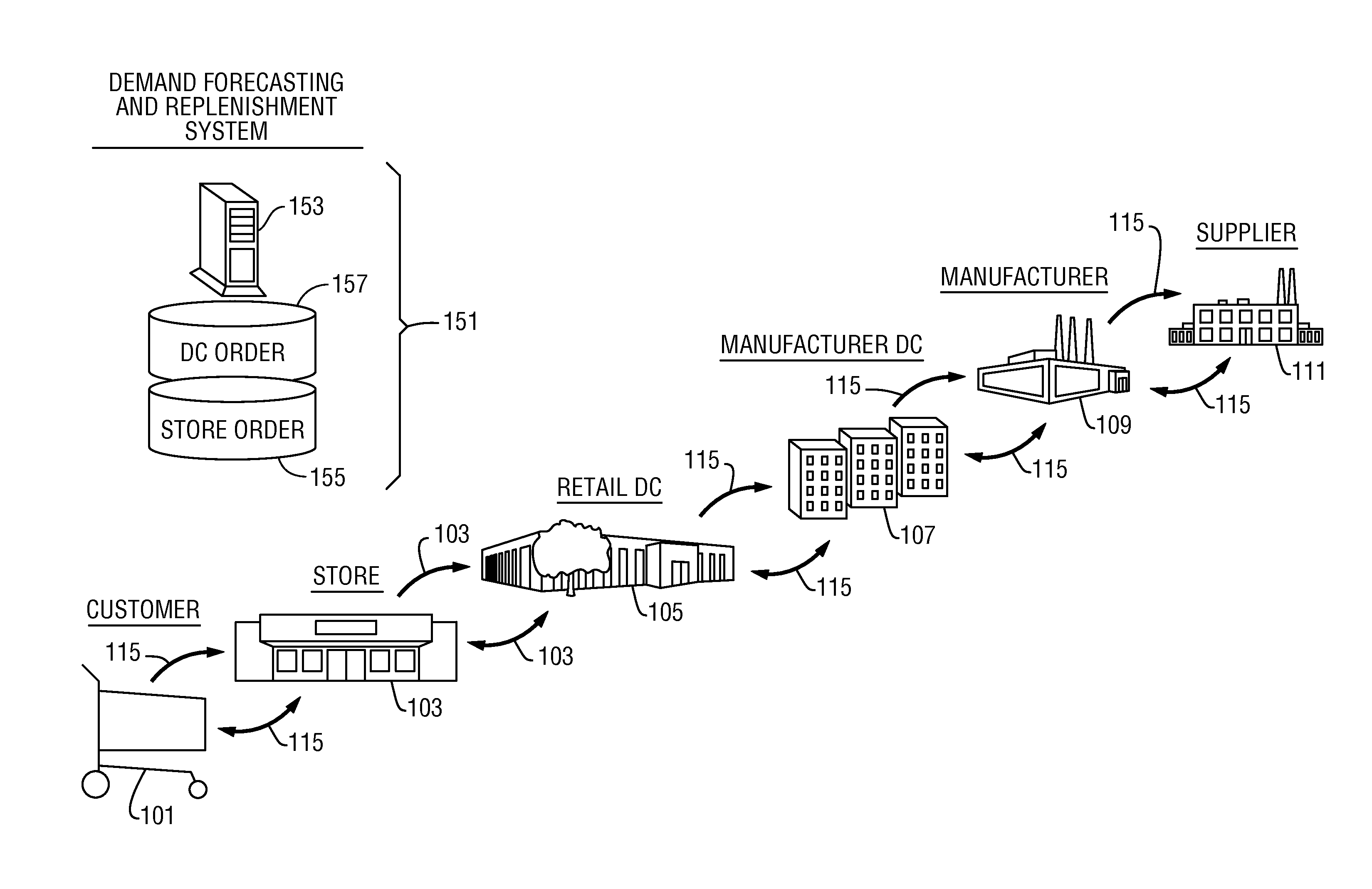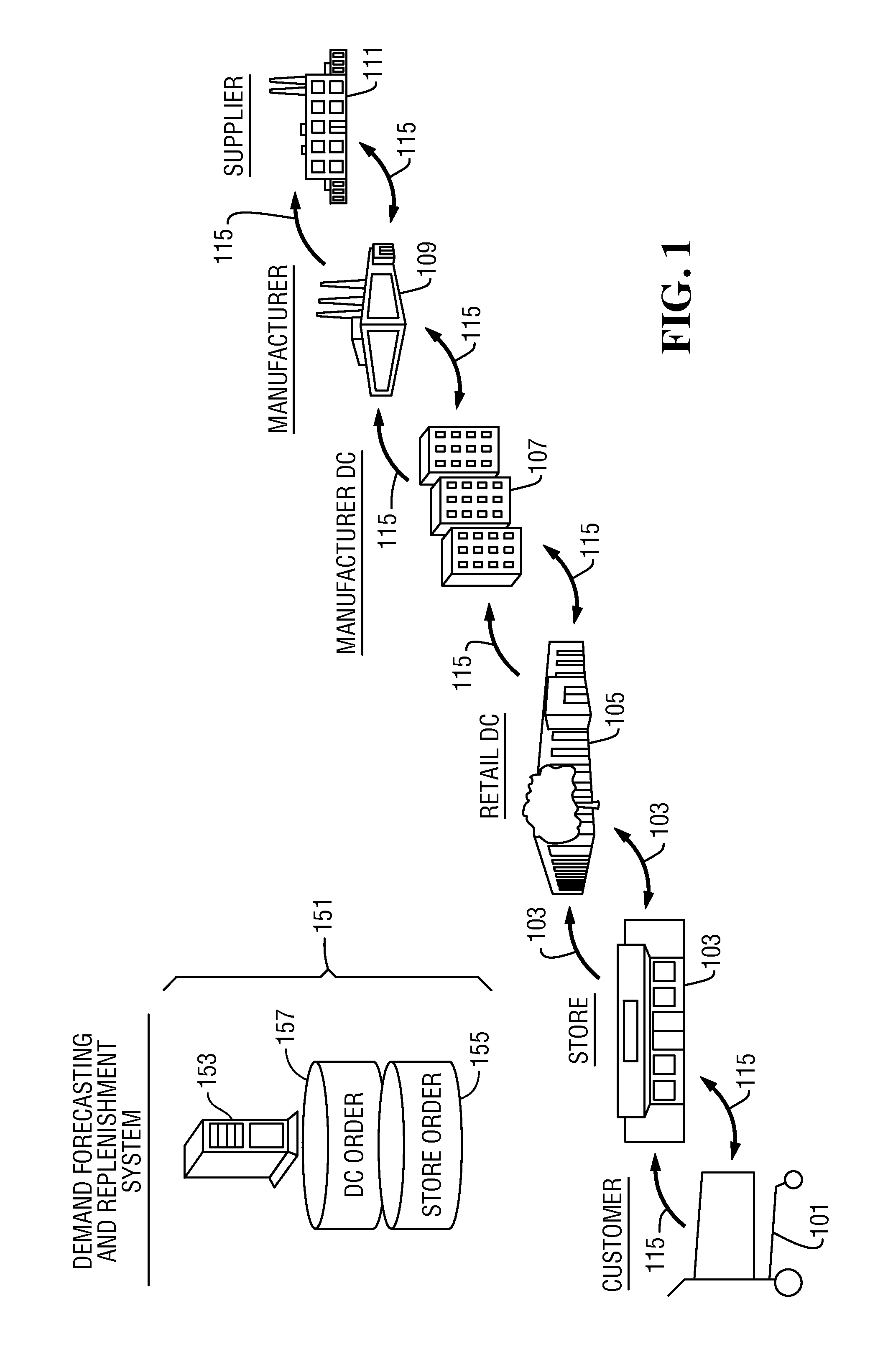Method and system for optimizing product inventory cost and sales revenue through tuning of replenishment factors
a technology of product inventory cost and factor, applied in the field of methods and systems for optimizing product inventory cost and sales revenue, can solve the problems of no comprehensive method available to predict the impact of replenishment lever on service level, loss of sales, or on shelf availability of retailers,
- Summary
- Abstract
- Description
- Claims
- Application Information
AI Technical Summary
Benefits of technology
Problems solved by technology
Method used
Image
Examples
Embodiment Construction
[0028]Modeling the demand distribution is at the core of the new methodology. By modeling the demand distribution for the duration of an inventory cycle, i.e., the time between receiving two shipments at store, and cross-joining the demand distribution against the available on-shelf inventory, it is possible to determine potential lost sales or service level.
[0029]FIG. 4 shows the density 401 and cumulative distribution 403 of demand for a given category of products. Cross joining the demand distribution curves against number of units of available on shelf inventory results in the sales metrics such as In-stock %, Service Level and Lost Sales.
[0030]Demand density curve 401, plotted against the left axis, Frequency (%), illustrates the relative likelihood for the demand variable to take on a given value. Cumulative distributive curve 403, plotted using the right axis, Cumulative Frequency, shows the probability that the demand variable will be less than or equal to a specified value....
PUM
 Login to View More
Login to View More Abstract
Description
Claims
Application Information
 Login to View More
Login to View More - R&D
- Intellectual Property
- Life Sciences
- Materials
- Tech Scout
- Unparalleled Data Quality
- Higher Quality Content
- 60% Fewer Hallucinations
Browse by: Latest US Patents, China's latest patents, Technical Efficacy Thesaurus, Application Domain, Technology Topic, Popular Technical Reports.
© 2025 PatSnap. All rights reserved.Legal|Privacy policy|Modern Slavery Act Transparency Statement|Sitemap|About US| Contact US: help@patsnap.com



